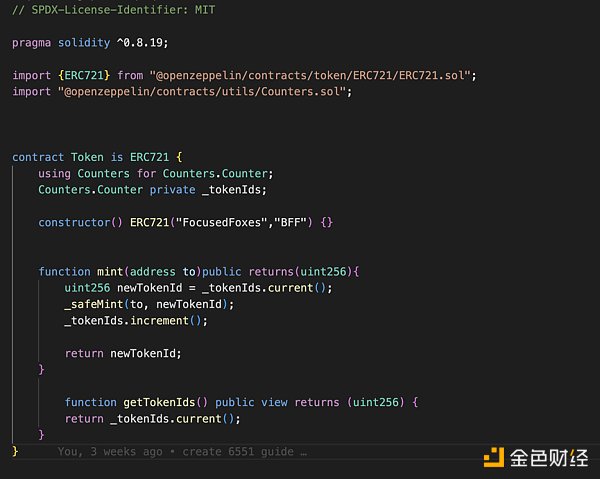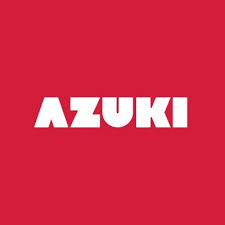Vice President of the Hong Kong University of Science and Technology, Wang Yang Seizing the opportunity to issue government-backed Hong Kong dollar stablecoin
HKUST Vice President Wang Yang seizes opportunity to issue government-backed HKD stablecoin.
Author: Wang Yang & Wen Yizhou
Editor: Tyler
In the previous article “Proposal for Hong Kong to Issue HKD Stablecoin Backed by Foreign Exchange Reserves”, we advocated for the introduction of a stablecoin (HKDG) based on the Hong Kong dollar, backed by its current high foreign exchange reserves of $430 billion. We believe that this initiative will bring additional liquidity to Hong Kong, revitalize the financial market, and support government investment projects and national development strategies.
- Understanding Two RWA Asset Issuance Models in One Article
- Exclusive Interview with Solv Co-founder Meng Yan DeFi and Public Chains Still Have Huge Development Potential, Perfecting Infrastructure is the Key to Mainstream Adoption
- Hive Digital CEO Blockchain and AI can mutually benefit each other
Although the government has not officially responded, our proposal has received widespread positive feedback in the community. Given the rapid development in the field of digital assets, especially the tokenization of real-world assets (RWA) and the plans of major entities to launch their own stablecoins, these developments highlight the urgency of issuing HKDG. In this follow-up article, we further elaborate on our position.
1. Tokenization of Real-World Assets (RWA) and the Imminent Increase in Stablecoin Demand
The tokenization of RWA, the conversion of tangible or intangible assets into digital tokens, is a breakthrough transformation in the field of digital assets and has the potential to redefine the market landscape. Through blockchain technology, the tokenization of RWA enhances transaction transparency, strengthens security, and broadens liquidity by enabling partial ownership. This approach not only solves the inefficiency problem of traditional financial systems but also narrows the gap between the digital asset field and the real economy, thereby promoting the development of Web3.
2. Explosive Growth of the Digital Asset Market
The current market value of US bonds and the global real estate market alone is $24 trillion and $28 trillion respectively, not to mention other real assets. Even if only 1% of these assets are traded through RWA tokenization, it would have a significant impact on the digital asset market. As tokenization penetrates various asset categories, from commodities to intellectual property rights, the digital asset market is bound to experience explosive growth.
It is foreseeable that, due to regulatory restrictions on the tokenization of RWA, the majority of RWA tokens on public blockchains will occur in the form of stablecoins. Therefore, we must be prepared for the rapid expansion of the stablecoin market value.
As we discussed in the previous article, Hong Kong has unique advantages to lead this revolution. However, this prospect depends on whether Hong Kong can timely issue the HKDG stablecoin backed by foreign exchange reserves. If Hong Kong falls behind major US entities that are ready to issue a large amount of USD stablecoins, it will miss the opportunity.
It is worth mentioning that it is not enough for commercial institutions in Hong Kong to issue their own HKD stablecoins. The issuance of fragmented and confusing versions of HKD stablecoins by different institutions will only become niche products without sufficient scale to challenge mature USD stablecoins like USDT. Without issuing the HKDG stablecoin backed by unified arrangements of foreign exchange reserves, the separate issuance of stablecoins by individual institutions will undoubtedly be marginalized and unable to compete with mature USD stablecoins. What’s worse, this will foster a false sense of progress and conceal the reality of missed opportunities.
Here we can also consider adopting a compromise strategy, which is to authorize commercial institutions by the government to issue a unified HKDG stablecoin. This approach may better stimulate the participation of commercial institutions, but it will also bring many new challenges. These challenges cover a range of unresolved issues, including reserves, regulatory balance of interests and risks, insurance, custody, security, etc.
The motivation for commercial institutions to issue stablecoins largely comes from the current high interest rate environment. However, once interest rates decline, these institutions will inevitably seek higher returns, which may increase risks. At the same time, if regulation is too strict, these issuing institutions may not be able to profit from it, thus losing the motivation for sustainable development. In addition, under this scheme, the SAR government will not be able to enjoy the benefits brought by issuing HKDG. Therefore, we should take a global perspective to view the government’s authorization of commercial institutions to issue HKDG as a phased strategy, and make the government’s unified issuance of HKDG our ultimate goal, and continuously strive for it.
3. Consolidate the global status of the Hong Kong dollar and challenge the dominance of the US dollar
Although the Hong Kong dollar can be exchanged for other currencies at any time, it is rarely used in international trade or as a global reserve currency, possibly because it is pegged to the US dollar. If Hong Kong can seize the opportunity of RWA tokenization to issue HKDG, the potential of the Hong Kong dollar as an international currency will be greatly enhanced, and it may even challenge the dominance of the US dollar in some areas.
4. “Opportunity window” only has one year
As we have previously pointed out, launching HKDG can enhance the international status of the Hong Kong dollar, especially in the field of digital assets. Given that USDT and USDC stablecoins have both experienced credit crises, there is a strong demand in the market for high credibility stablecoins. With the support of the SAR government’s foreign exchange reserves, HKDG will enjoy unparalleled credibility. Due to the pegging of the Hong Kong dollar to the US dollar, HKDG may become an attractive solution to challenge the dominance of the US dollar stablecoin.
We believe that the timely issuance of HKDG, coupled with the upcoming RWA tokenization, can lay the foundation for strengthening the internationalization of the Hong Kong dollar and provide a path to challenge the dominance of the US dollar. Although the stablecoin market is currently relatively small compared to the global economy, with the strong momentum of RWA tokenization, the stablecoin market will prosper. If HKDG can occupy a favorable position and stand firm early, even after the rapid growth of the stablecoin market, it can still maintain a leading position. If the market value of the RWA tokenization market reaches trillions of dollars and HKDG can occupy 10% of the stablecoin market, it will be a major victory for the internationalization of the Hong Kong dollar and a substantial challenge to the dominance of the US dollar.
5. Summary
We once again strongly urge the government of the special administrative region to take action to issue HKDG. We have a narrow window of opportunity to truly establish Hong Kong as the primary international hub for Web3. We expect this window of opportunity to be open for approximately one year at most. This is a crucial endeavor: it not only determines whether Hong Kong can become the world center for digital assets and Web3 development, but also relates to the strategic goal of challenging the dominance of the US dollar. We must seize this historic opportunity. Hong Kong cannot afford to wait, and neither can our national strategy.
The authors are respectively the Vice President of the Hong Kong University of Science and Technology and the Chief Scientific Advisor of the Hong Kong Web3.0 Association.
Ph.D. students at the Hong Kong University of Science and Technology.
We will continue to update Blocking; if you have any questions or suggestions, please contact us!
Was this article helpful?
93 out of 132 found this helpful
Related articles
- Why is Ethereum’s position as the king of public blockchains difficult to shake?
- a16z AI combined with blockchain creates four new business models
- Interview with Sui’s Vice Chief Information Security Officer at Mysten Labs Considerations, Design, and Practice of Sui Blockchain Security
- Sei’s ultimate marketing rule Make headlines through news, and use sunshine airdrops to sweep the cryptocurrency community.
- 10 Ways NFTs are Boosting the African Tourism Industry
- Insights and Reflections Why is it difficult to hear the voices of female entrepreneurs in Web3?
- Exploring the Concept and Function of Layer 3 in Modular Blockchain






